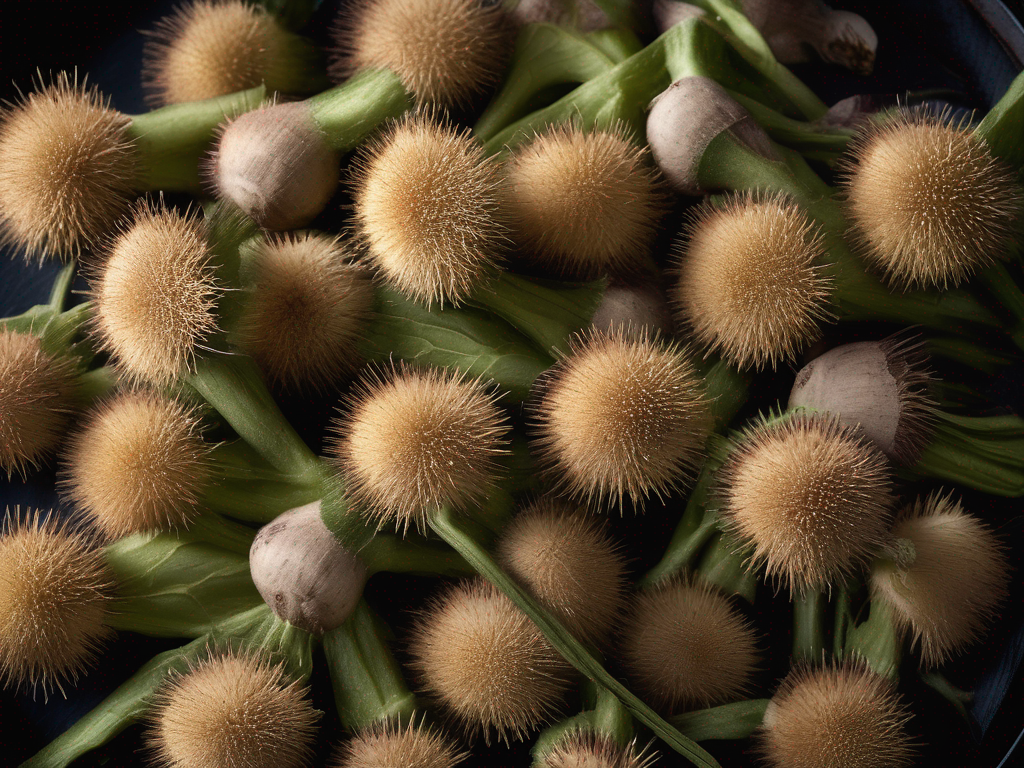
Salvaging Mushy Burdock: Tips for Food Safety and Storage
Get Your Free Food Safety Cheat Sheet
30 most common foods with instant answers. Print it and stick it on your fridge—completely free!
Salvaging Mushy Burdock: Tips for Food Safety and Storage
Burdock, a root vegetable known for its earthy flavor and numerous health benefits, is a versatile ingredient in many cuisines. However, when burdock becomes mushy, it can be challenging to salvage and may lead to food safety concerns. In this blog post, we will explore practical tips to rescue mushy burdock while ensuring food safety and proper storage techniques. (Burdock)
Understanding Mushy Burdock
Mushy burdock is often the result of overcooking or improper storage. When burdock becomes mushy, its texture changes, and it may lose some of its nutritional value. However, with the right techniques, you can still salvage mushy burdock and enjoy its unique flavor and health benefits.
Signs of Mushy Burdock:
- Soft and limp texture
- Loss of crunchiness
- Excessive moisture content
- Unpleasant odor or taste
Salvaging Mushy Burdock
1. Rinse and Drain:
- If the mushy burdock is due to excess moisture, rinse it under cold water to remove any sliminess.
- Drain the burdock thoroughly to eliminate excess water and restore some of its texture.
2. Reheat with Care:
- If the mushy burdock is a result of overcooking, try reheating it briefly in a pan with a small amount of oil.
- Stir-fry the burdock quickly to help it regain some crispness and flavor without further compromising its texture.
3. Incorporate in Soups or Stews:
- Mushy burdock can be added to soups or stews where its texture may not be as noticeable.
- Cooking the burdock in a flavorful broth can help mask its mushy consistency while still retaining its taste.
4. Mix with Crunchy Vegetables:
- Combine mushy burdock with crunchy vegetables like carrots or bell peppers to add texture and variety to your dish.
- The contrast in textures can make the mushy burdock more palatable and enjoyable.
5. Make a Puree or Dip:
- Blend mushy burdock with other ingredients to create a puree or dip.
- Adding herbs, spices, or citrus flavors can enhance the taste and mask the mushy texture of the burdock.
Food Safety and Storage Tips
1. Proper Handling:
- Always wash and peel burdock before cooking to remove any dirt or contaminants.
- Use separate cutting boards and utensils for raw and cooked burdock to prevent cross-contamination.
2. Storage Guidelines:
- Store fresh burdock in the refrigerator crisper drawer wrapped in a paper towel to absorb excess moisture.
- Use a perforated plastic bag to maintain humidity levels and prevent wilting.
3. Refrigeration:
- Cooked burdock should be refrigerated within two hours of cooking to prevent bacterial growth.
- Store cooked burdock in an airtight container in the refrigerator for up to three days.
4. Freezing:
- If you cannot consume the burdock immediately, consider freezing it for future use.
- Blanch the burdock before freezing to preserve its color, flavor, and nutrients.
Conclusion
Mushy burdock may seem challenging to salvage, but with the right techniques and creativity, you can still enjoy this nutritious vegetable in your meals. By following proper food safety practices and storage guidelines, you can make the most of mushy burdock while ensuring your dishes are safe and flavorful. Experiment with different cooking methods and flavor combinations to transform mushy burdock into a delicious and satisfying dish. With these tips, you can rescue mushy burdock and elevate your culinary creations. Learn more about burdock and explore its culinary possibilities today! (Burdock)
Related Posts
Here are some other articles you might find helpful:
- Why is my Burdock turning brown and how to extend its freshness
- The Ultimate Guide to Storing Burdock: Preventing Wilting and Spoilage
- Freezing Burdock: A Guide to Preserving this Nutritious Root Vegetable
- Signs that Burdock has Gone Bad: A Guide to Identifying Spoiled Burdock
- Proper Storage of Burdock: Extending Shelf Life
Authoritative Food Safety References
These agencies and university labs inform every tip and health precaution we publish.
USDA FoodKeeper – Cold Storage Guidelines
Official refrigerator, freezer, and pantry timelines maintained by the U.S. Department of Agriculture.
Visit USDA FoodKeeperFDA Produce Safety Rule & Grower Guidance
Field-to-fridge handling practices that prevent contamination of fruits, vegetables, and leafy greens.
Visit FDA Produce SafetyCDC Foodborne Illness Prevention Hub
Surveillance-backed guidance on pathogens, symptoms, and steps to reduce foodborne illness risk.
Visit CDC Food SafetyUC Davis Postharvest Technology Center
University research detailing optimal storage atmospheres for produce after harvest.
Visit UC Davis PostharvestPenn State Extension – Home Food Preservation & Safety
Peer-reviewed extension bulletins on safe canning, chilling, and reheating practices.
Visit Penn State ExtensionGet Your Free Food Safety Cheat Sheet
30 most common foods with instant answers. Print it and stick it on your fridge—completely free! Want more? Upgrade to the complete guide with 70+ foods.
Scan your food directly and get instant safety info using our AI-powered camera feature.